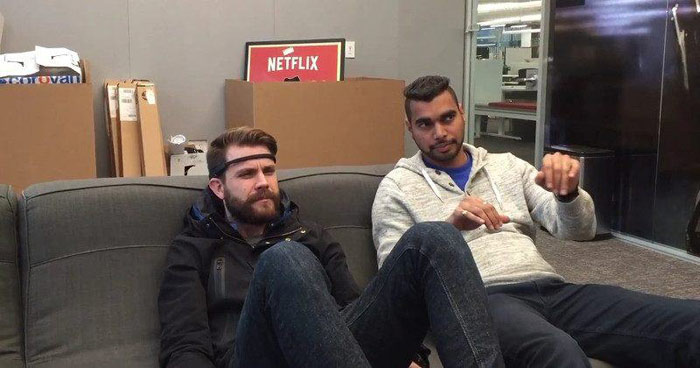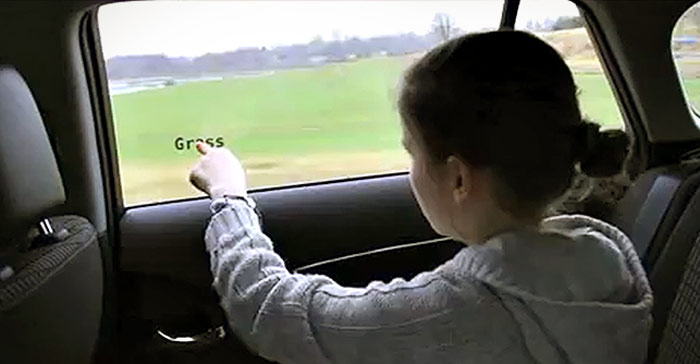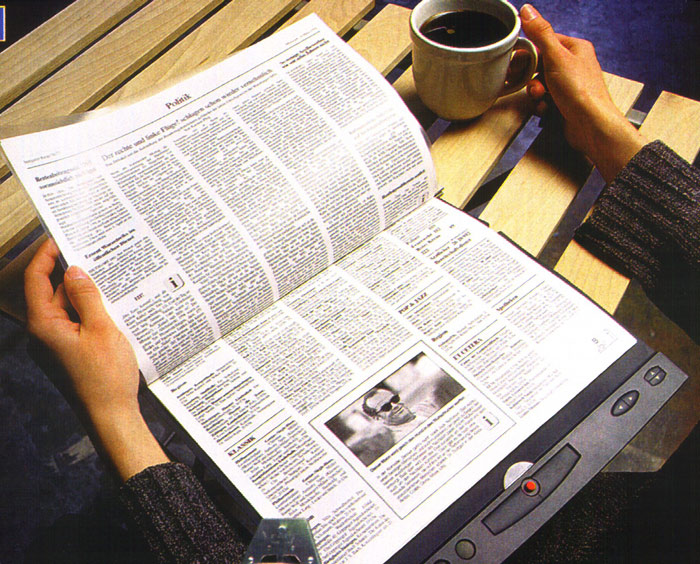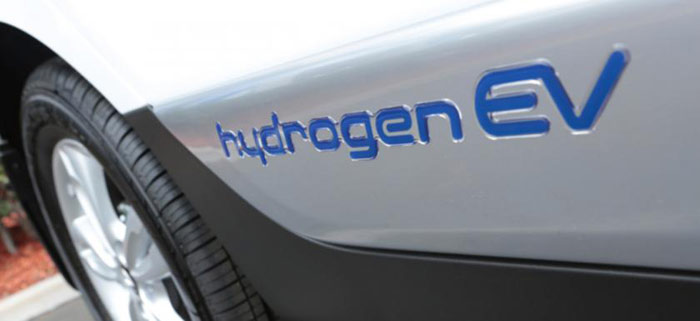There are more and more gadgets in our pockets, attaché cases, strewn around our homes, but, while it’s already regarded as customary, there is no or little actual breakthrough progress which would leave us gaping at the radical change. True, the stuff is getting better, yet we haven’t had any real surprises recently. Our iPhones remain about the same, our PCs may look differently but basically they, too, are the same good old work tools or play tools.
Of course, it’s not going to go on like this forever – sooner or later new inventions will open up vistas we can’t even begin to imagine these days. Is it possible that we are in for techno surprises before this year is over? Here are some new devices which may change your life to a significant extent.
The Google Hat

Having attempted to win over the public with their Google glasses several years ago and (rather unexpectedly) failed, Google hasn’t stopped trying to come up with an idea of things wearable. This year it is going to be a Google hat, not just a hat, naturally, with some electronic tricks thrown in.
The Google hat is a baseball-style headwear that has a neatly built-in camera for taking pictures and videos. The first idea that crosses your mind about it is the convenience of the design for social media posts, but Google’s patent also accentuates the safety factor, indicating that the emergency situation feature allows the transmitting of a video onto an emergency system which may act as a deterrent on a potential aggressor in the user’s vicinity.
Mindflix

This is rather a weak point of the Netflix’s when it has you scrolling in a futile attempt to find a movie that you can’t quite place a name to. What could be better then than having a device that can scan your mind for the particulars of whatever movie it is you feel like watching at the moment.
Rest assured that Netflix is perfectly aware of your predicament and is already on the way to remedying the state of things. Mindflix, their latest device, is going to do just that, search your mind in order to provide you with the suggestion for the best evening movie. It is going to be a sort of a headband designed to read brain frequencies and offer a result. In addition it gives you mind control over the Netflix browser as you concentrate and focus on your preferable movie. The new idea was voiced when the Netflix crowd was called upon to suggest inventions during their Hackathon session, and it can turn into a device to be found in stores sooner than one expects.
Holograms

Holograms are the thing that is coming on strong, and they are unstoppable. You may remember Tupac’s hologram appearance at a performance, but that miracle is already a few years old and the technology has been advancing rapidly ever since. We may see the decline of physical screens in the near future as you will be projecting the holograms you need onto anything handy: onto walls, onto your body, even into the air.
In fact, Australian National University is already a fine example of the achievements of the hologram technology. According to the University’s claims, their boffins succeeded in achieving the best hologram quality ever, creating holograms with silicon pillars by millions. The resulting projected light is, first, transparent to an almost incredible extent, second, it is even more incredibly miniaturized, doing away with the need of huge screens that take up a lot of space. The latter will be a veritable present for those pros whose professions put a limit on the weight and size of the equipment.
Wire-free charging

Now this development is surely a long-awaited one by all and sundry. What’s more, there are speculations about the new generation of smartphones being able to re-charge without plugging them in. Taken at large, the idea isn’t what you would call new. About a century ago the famous Nicola Tesla thought of a way to transfer energy through what is known as Tesla coils. He thought that everyone should have free access to energy, but of course this noble idea doesn’t suit energy moguls who make money from it. Tesla, having no business head, omitted to sell the inventions he thought up.
But these days wireless energy transfer is growing up to be a big idea again. The picture of wire-free houses when we get all the necessary power in the Wi-Fi fashion, via antennae, is so tempting. There is even an existing result of such an experiment, by Walt Disney scientists! They built up a room able to recharge about ten devices simultaneously. Your smartphone begins recharging on its own as soon as you step inside.
Unmanned cars

Cars that drive about the city without a driver is a long-worked-on notion, the concept has been with us for so many years that nobody will be really surprised when they turn up on our streets. Yet it may happen before the year is past. There are many new makes to be put out in the second half of the year that have the self-driving feature. For one, Elon Musk, the entrepreneur with a worldwide name, announced a massive release of Tesla cars that will drive about unmanned. In addition to that he is working on a software update for cars already manufactured that will endow them with the self-driving feature. Although in order to be available to the public self-driving cars must prove to the authorities that they are safe and perfectly manageable, Musk believes he can go through with it with flying colors.
Musk’s vision of the futuristic car is the possibility of a completely autonomic ride from L.A. to N.Y. absolutely unmanned, no-one will have to do anything, not even re-charge it, upon the completion of which the car will take itself off to the parking lot. He says it all will happen within the remaining months of the current year.
Unheard-of car windows

The car industry is always the one for endless improvements, you can expect something exciting every year in the various spheres. This year the spearhead of the interest seems to be windows. While some of us may believe it is not the most interesting part of a car by far, they may change their opinion after they have heard about the proposed future of this “dull and unprepossessing” feature. Beginning with the windscreen, it will be carrying a “Heads Up Display” enabling the driver at a casual glance at the glass to read the GPS directions, the speed, any information you may need while driving is projected on electronically, by hologram, likely as not.
Drivers are not the only ones to get the benefit of the innovations. General Motors and Toyota are thinking about the passengers too. Their windows will be interactive to the point of taking pictures and making videos by just touching the glass. Other facilities that can be made available are the ability to send messages to people in other cars and to zoom in on something beyond the window you would like to take a better look at.
Electronic paper

This is one of the assumedly major changes we are expecting from technological discoveries – when paper becomes electronic stuff. This project has been underway for years and years, for problems kept surfacing, but now it appears that the year 2017 may become decisive. We might have the results of these experiments in stores available to the general public.
Canadian researchers from the Human Media Lab, Queen’s University, produced displays that are, apart from being very small, can also be folded in any way you want without losing their ability to project images. Altogether electronic displays are beginning to resemble paper sheets more and more, and it won’t be long before electronic sheets will fill your scrapbooks carrying not only photographs but also videos and movies.
Handle from Boston Dynamics
Apparently they still used the “Big Dog” blueprints with the addition of wheels. Certainly, it is just as well-balanced as it should be – coming from Boston Dynamics – but its potency goes further yet. Some of its performances are very impressive, like being able to wield 100 pound packages displaying some adroit arm work, or jumping into the air in a way that would amaze seasoned skateboarders. The purpose behind this invention remains somewhat unclear, chances are it is meant to merely impress. Some speculate that the robot can be tasked to disarm bombs or, equipped with firearms, become a mighty weapon, but these employments sound rather frightening.
iPhone 8

No matter what other wonders may lie in store for us, a lot of people are looking forward to the fabulous iPhone 8! There are so many speculations about this newest product by Apple, and some of them sound downright crazy. To begin with, it is supposed to recharge wirelessly (the invention we already mentioned in this article). To make this way of recharging possible (and do away with our current use of batteries) the new iPhone will have to be made from glass, thus we can get a pretty good idea how it is going to look and feel. They say it will be just one unbroken sleek case without a single button to mar the smoothness, and the screen will cover its whole surface. Its waterproof qualities will be enhanced compared to the previous makes.
While the aforementioned features sound more or less within the realm of expectations, iPhone 8’s security measure goes further yet: your phone is going to recognize you by your face! The rumor has it that iPhone 8 will be able to scan your face to make sure that it is handled by none other than the owner, and it’s not just a regular recognition scan. The technology used is reported to be so advanced that the scan will also be reading small facial changes from which it will learn what mood you are in right now.
The possibilities of technological life extension

The most exciting thing about new technologies is probably the recurring wonder about the ones that remain hidden from the public view. What exactly these suppressed technologies are that it is necessary to keep them safely concealed? We will understand it if the mysterious technologies will be those related to life extension, for immortality and youthful appearance are notions that have been haunting humanity for centuries. In the old days it was the belief in the “fountain of youth,” these days we indulge in filming movies about it (Elysium comes to mind first), while putting our faith in science that must hit upon a satisfactory solution sooner or later. And it does seem as if we were approaching to a solution – only so far it will be available to those who can pay out enormous sums to profit by it. For one, Paypal’s founder Peter A. Thiel is giving millions to further life extension research.
With such good funding, the research produces results, especially in biotechnology and nanotechnology. There is a project involving injecting into the body tiny robots which will inhibit undesirable processes like proliferation of cancer cells. Now these technologies are working out ways of directing these robots in the body. Germany’s Philips Innovative Technologies located in Hamburg already knows some of the answers. They explore the possibilities of using magnetic fields for controlling tiny robots inside the body remotely. If they succeed, the robots could be ordered to work upon harmful cells only which will help avoid unnecessary damage.
3D printed houses
At first it sounds as if we had the perfect solution, but there are some “buts” that are standing in the way. The resulting house was no larger than 400 square feet. Of course, this is still good, for you end up with the $25 price for a square foot. And then, you could make it larger if you put your mind (and money) to it. You don’t have to have dealings with any construction company with those mobile 3D printers doing the work for you quickly and efficiently. They will be moving about creating the whole one-piece structure (unlike the traditional assembling method when a house is made up from many different parts).
Hydrogen-based car fuel

Considering the important role cars play in our lives, we are bound to expect giant steps in their development. Well, the car industry doesn’t actually disappoint us! Here is an invention that changes our view on how our cars are powered, and it is connected with using hydrogen for car fuel. The idea is quite an old one and has been around for about a decade with no significant headway until lately. It was Toyota that made the Toyota Mirai, the first hydrogen-powered car that has been on sale for a couple of years: in Japan since 2015 and all over the world since last year. Lexus and Audi have also intended to create this kind of car, but they got left behind in the race – at least for the time being.
The Mirai, using an electric motor and a hydrogen fuel cell, comes classified as a fuel cell vehicle. It carries no combustion engine, and the hydrogen fuel cell’s exhaust contains only water, which makes the Mirai a totally environment-friendly car. Besides nil pollution, this really futuristic make boasts other high-tech specs including a frontal radar system and touch-sensitive screens. Will it become 2017’s number one car?
SpaceX Dragon 2
We may be more interested about changes in our routine life, but technology looks far beyond what is going on on the Earth. Humans never give up on the will to reach out to other stars, and this is exactly what the SpaceX Dragon Version 2 is about. The most recent news about it as stated by Elon Musk is that the Dragon is going to be launched within this year. It is supposed to circle the Moon and – the most exciting line – carry two passengers who will pay for their tickets. This Musk’s project appears to be developing along the same lines as Boeing’s program that revolves around a similar spacecraft, the CST-100 Starliner; the craft are created with the view of providing crew transportation to the International Space Station and back. NASA stands in bad need of such craft, and this can be the most important invention of the year 2017 nationally.







